collectmap
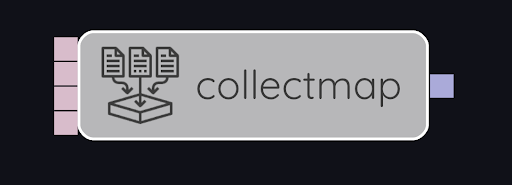
| Name | Type | Description | Optional |
|---|---|---|---|
key |
?0 |
key to be added to the map |
no |
value |
?1 |
value to associate with current key input |
no |
include |
?2 (interpreted as boolean) |
if true, add current key/value pair to the map |
yes |
| Name | Type | Description | Optional |
|---|---|---|---|
output |
map<?0>to<?1> |
the accumulated map, output when the complete input is true |
no |
collectmap reads its four inputs ports. if include is true (or if the include port is not connected), the key and value association is added to the accumulated map. if complete is true, the accumulated map is output, and the accumulator is reset to empty. Note that there is no output except when the complete input is true. It is recommended that you read the Iteration section of the Dataflow in Coreograph document in addition to the information presented here.
collectlist, collectset, and collectvector have the same shape: three input ports on the left, one output port on the right. The collectmap special node is slightly different:
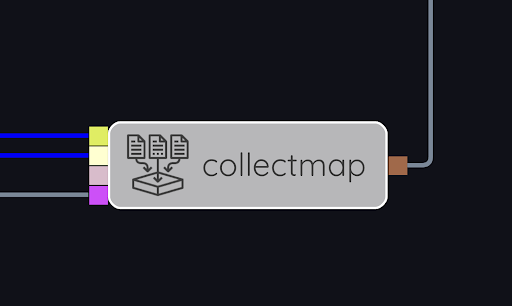
collectmap has input ports for a key and a value, in place of the single element input port of collectlist, collectset and collectvector. The Special Node example collectmap has a modified structure in which both keys and values are fed to the collectmap node:
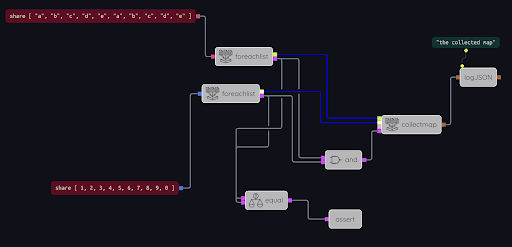
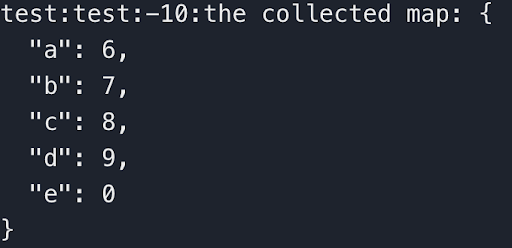
A map has some properties of a set, namely, keys are unique and occur at most once in the map. Put differently, there are no repeated keys in a map just as there are no repeated elements in a set. Running the example gives this result:
The keys are processed in the order "a", "b", "c", "d", "e", "a", "b", "c", "d", "e", and the corresponding values are processed in the order 1, 2, 3, 4, 5, 6, 7, 8, 9, 0. The first time the key "d" is received by the top input to collectmap, the corresponding value 4 is received on the second input, and "d" is mapped to 4. The second time "d" is received by the top input, the corresponding value 9 is received on the second input, and "d" is re-mapped to 9. The final result is that "d" is mapped to 9.
There a slight complication that did not occur in the earlier collect examples: the number of keys (coming from the upper once node) must agree with the number of values (coming from the lower once node). If they do not agree, then some keys or values will be unconsumed. The foreachlist nodes output the value true from their lower output port for the last element of the list they are iterating over, and false otherwise. collectmap takes this boolean indicator in its lowest input port to indicate when the collected map is complete and should be output. If however the foreachlist nodes don’t agree about the number of elements, one will output true when the other outputs false. In order to detect this condition and feed a consistent boolean value to the collectmap node, we perform an and operation on the boolean outputs of the foreachlist nodes, assert that this and value is true, and feed it to the collectmap operation. If the input lists disagree in length, this assertion will be triggered and will print an error message. You can try it by modifying the project like this:
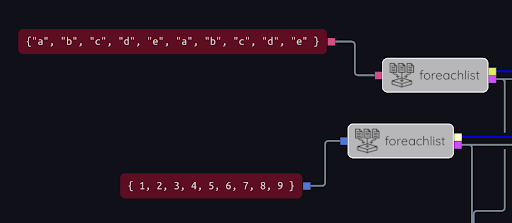
and selecting the Run action:

presently, runtime errors refer to line positions in the transpiled project. You can download this file using the Transpile action. Ultimately we will cause runtime errors in transpiled projects to refer to project positions (the nodes and links of a diagram) instead.
|